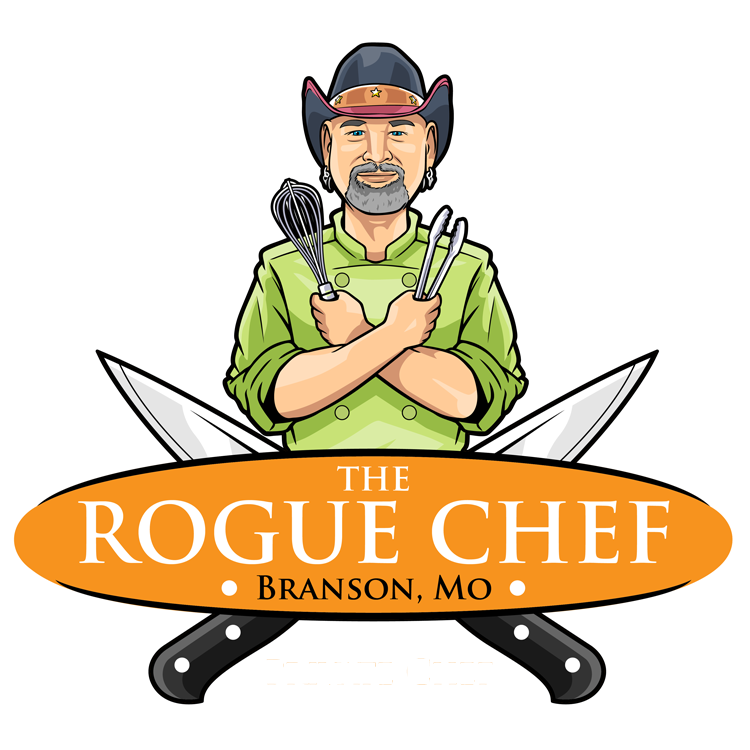It’s a fast-paced world, where everyone eats out a few times a week. While it might not be as sophisticated and demanding as the previous decades, table etiquette is important, especially if you dine somewhere nice or you enjoy a meal served by The Rogue Chef in Branson, Missouri. Before you pull up a seat to eat, here are 7 basic etiquette rules to help you enjoy your dining experience.

- There are TWO forks. In any moderate to fine food establishment, you will always find two forks at your table. The first fork is smaller than the second fork. Use the small one for your salad. Use the large one for your entree. If you can’t remember, think about what you are going to eat. The salad is usually smaller, lighter, easier to eat, so you will need a smaller utensil; whereas, the entree is usually hearty and delicious. You may want to eat bigger bites and much more of it, so you will need a larger utensil. If, for some reason, they are the same size, use the one farthest from the plate first. The placement of these utensils are always on the LEFT side of your plate. Remember the word FORK has 4 letters; the word LEFT also has 4 letters.
- The forks should be neatly placed inside, next to, or on top of a napkin. Proper etiquette requires the napkin to be next to, but any of the mentioned ways are moderately acceptable. There is always a debate about the napkin, where to place it and how to use it. This is easy. Unwrap or open the napkin to fit on your lap. As you eat and need a napkin, you will know exactly where to find it. Keep it there. No one wants to see your nasty napkin on the table. Use it for the entire meal. If it is a mess and you need another one, ask the server for one. This is uncommon, unless you are enjoying a plate full of buttery crab legs or a rack of barbeque dripping ribs. Once you have finished your meal, you can place the napkin on the plate to table as you leave or on your plate as the waitstaff takes your plate.
- On the right side of your plate, you will find a knife and spoon. The spoon is typically used for your soup. Many people use it to stir sugar in their tea (though a long-handled teaspoon is the proper utensil, and would also be found in this location, if available). The knife’s blade should be facing the inside of the place setting. This is a safety precaution. If you follow the old table etiquette saying about using utensils from the outside in, then you could easily get cut on the blade while getting your spoon. You might also find two knives in this location. One is to butter your bread, unless you have a bread plate and butter knife above your forks. The other knife, hopefully a much sharper one, is to cut the food in your entree. You may also see a small fork on this side. This is for your seafood. It is smaller than the salad fork, also reminding you to eat a smaller portion of seafood.
- The knife should point to your drink. Stop asking if this glass belongs to you. If your knife is pointing to it, drink it. In fact, all your drinks are on the knife side. This placement is purposeful. You have quick access to a sharp object should anyone try to to take your drinks, especially those containing alcohol or caffeine.
- You may wonder why you have a fork or spoon or possibly both placed above your plate. These are for dessert. Don’t touch them until dessert has been served. They are placed here to remain out of the way of the rest of the meal, but still ready to use when needed.
- In the center of your place setting, you will find a plate. Sometimes this is a large decorative plate, known as a charger. You will not eat food off this plate. Your courses will be served and removed from the charger. It is simply here for looks and most likely compliments the decor of any table setting. Plates will be set and removed from the charger. If there is no charger at your setting, there will be an empty space for the plate. Avoid putting anything in this area, as it may hinder the pace of your food service.
- When you have finished with the course or meal, place your used utensils face up, diagonally across your plate. This signals to the waitstaff that you are ready for them to take your plate.
Setting a table may seem complicated, but now that you know what each item is used for and where to find it, you will do much better with practice. If you are simply overwhelmed by all this information or just want someone else to set your table, contact Chef Jeff, The Rogue Chef in Branson, Missouri. He can make you the perfect meal and serve it to you with the proper settings.
Do you have other culinary questions? Email The Rogue Chef directly at [email protected] to get an answer.
If you are interested in learning more about the culinary world, consider reading:
- How to Hire a Private Chef
- Why You Should Hire A Private Chef
- Which Private Chef Service is Right for You?
- Culinary Lingo
- How to Support a Local Business Without Spending Any Money
- Fancy Words for Common Foods
Written by: Dr. Dana, Co-Owner of The Rogue Chef, Branson, MO. 618-977-3156; www.TheRogueChefBranson.com
